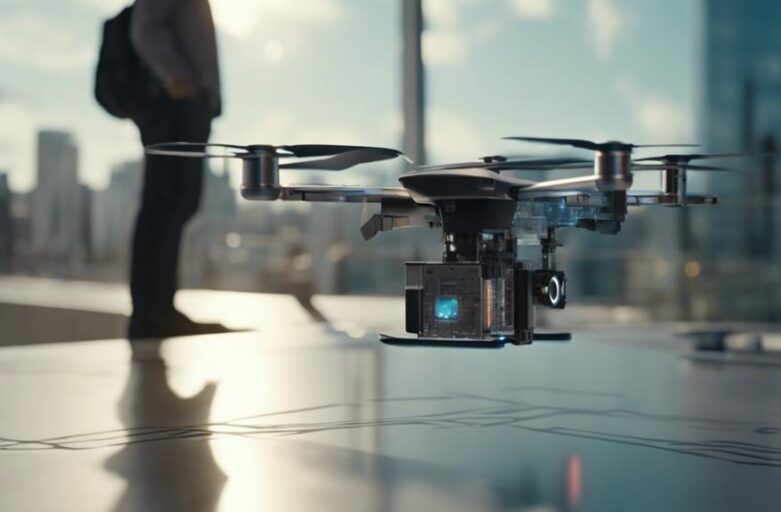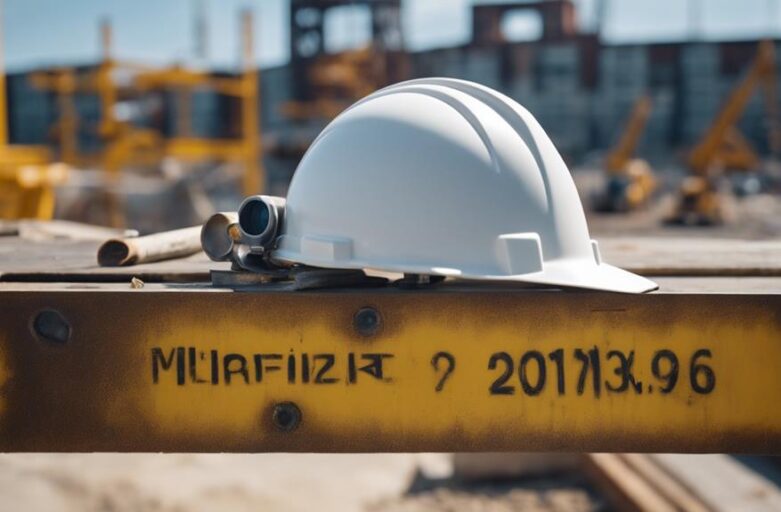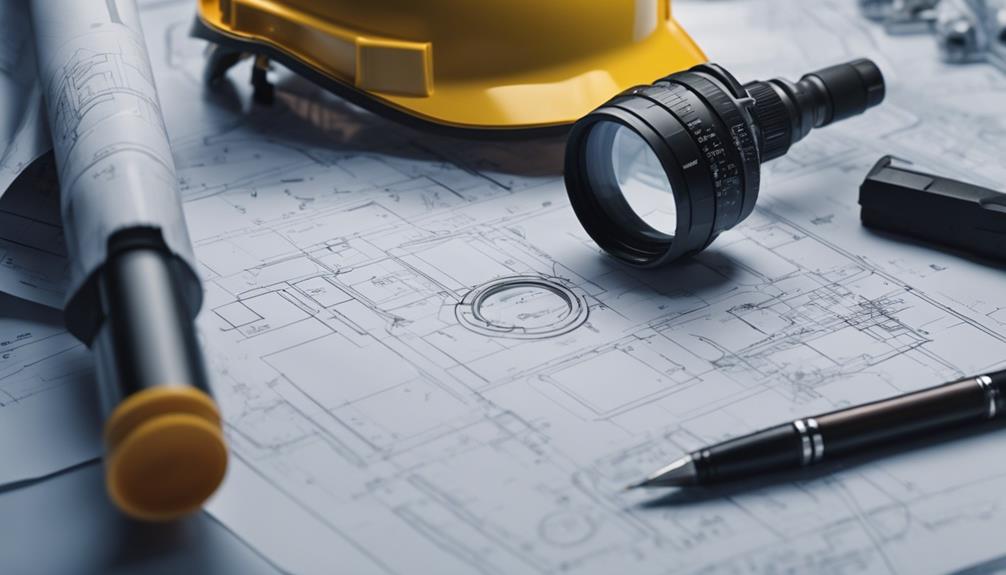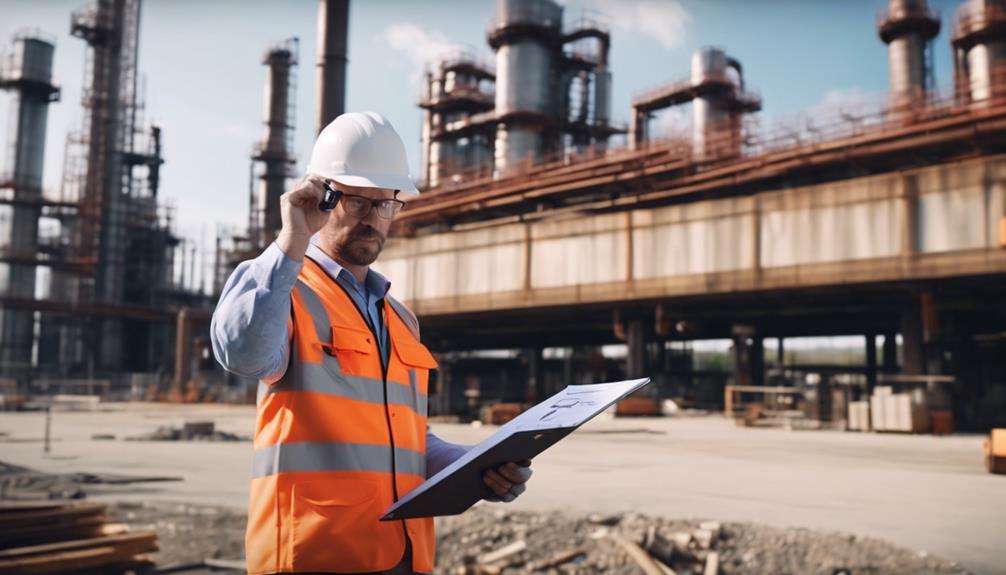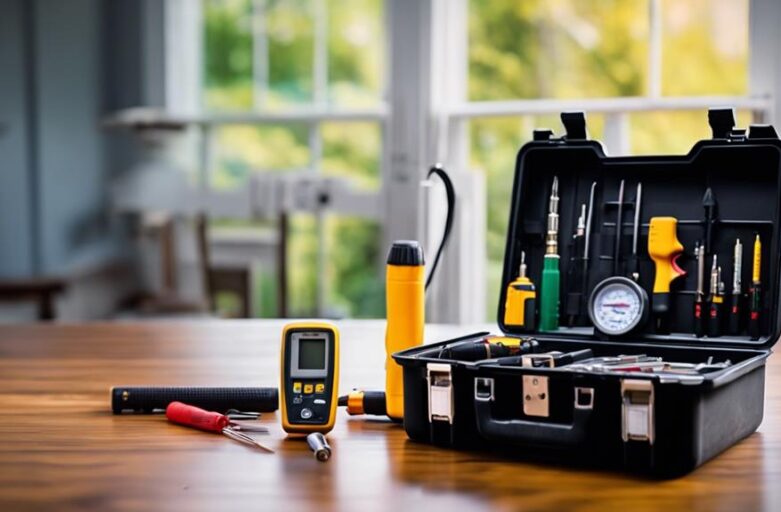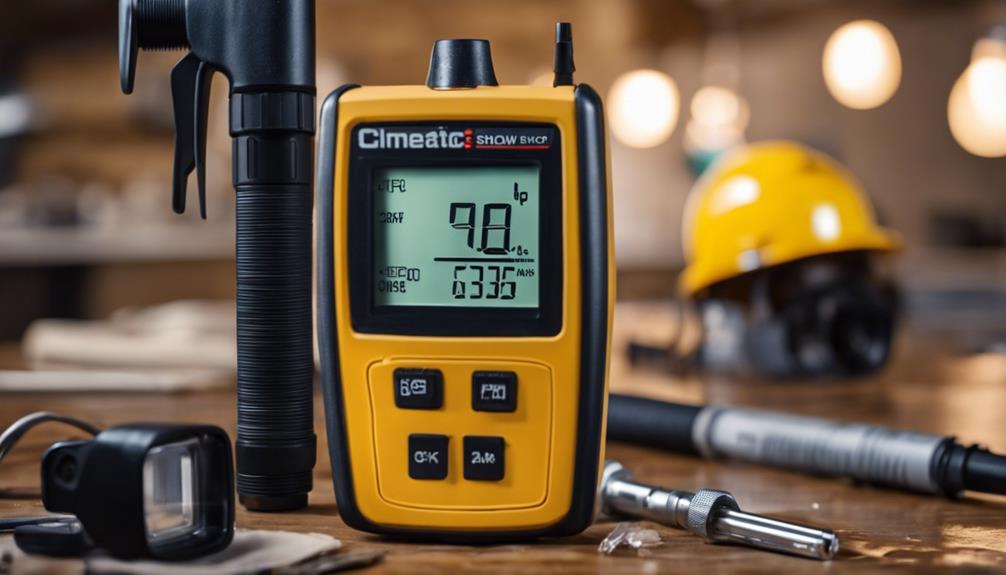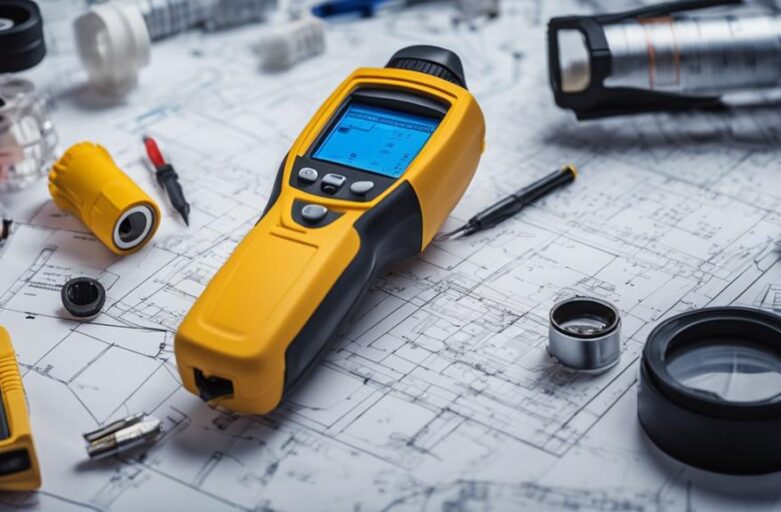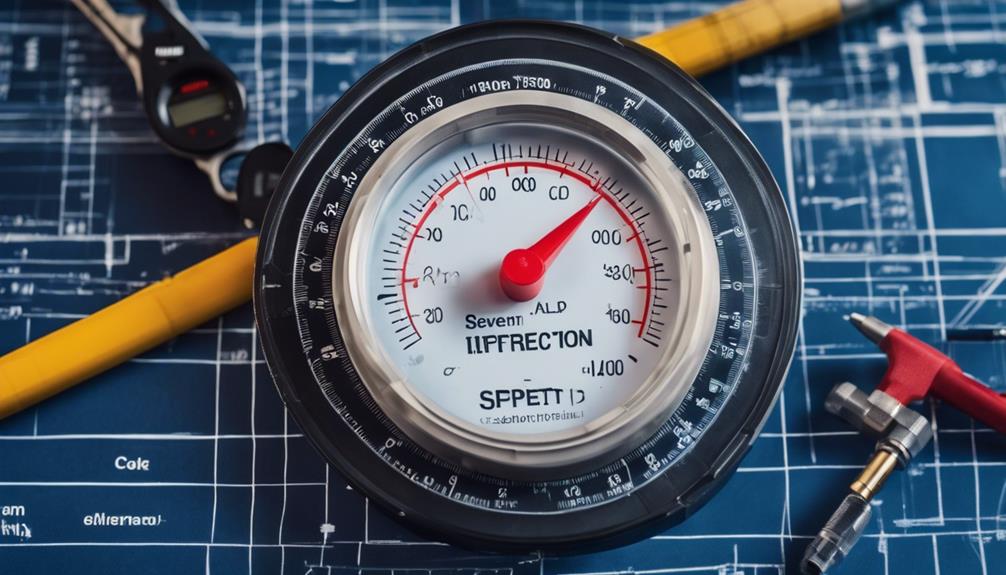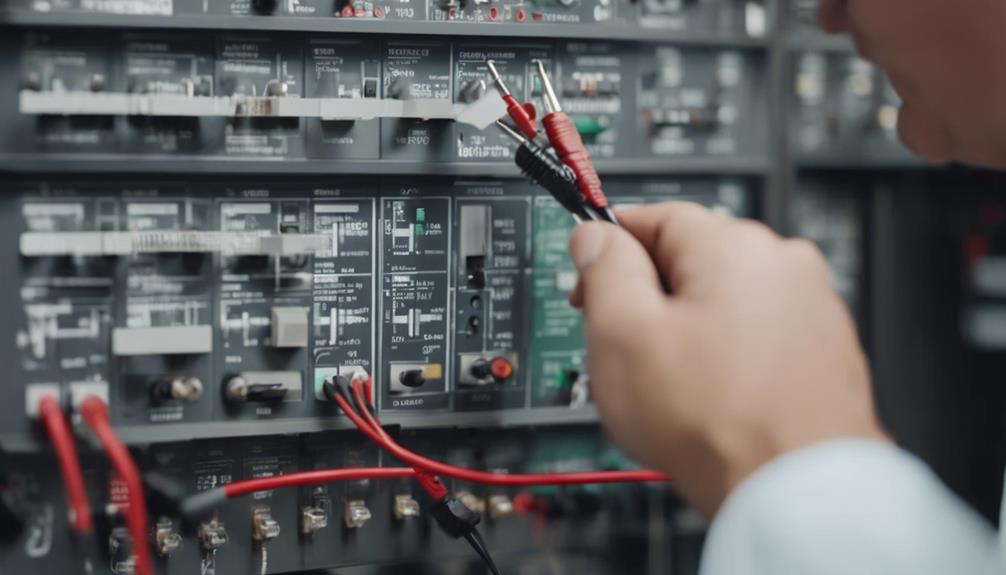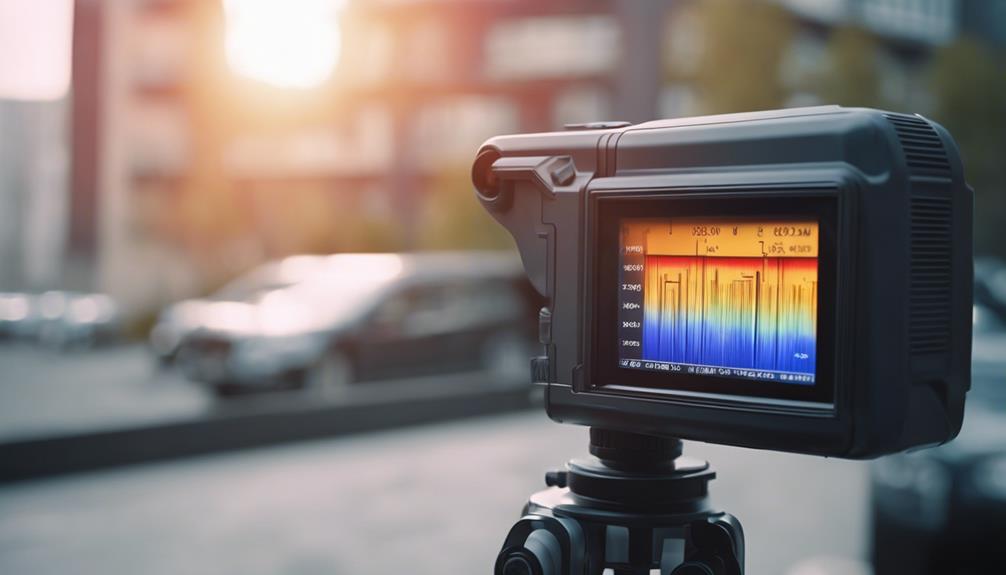Get ready to learn about the coolest new tools for inspecting buildings!
Drones can fly around and give us super clear views of hard-to-reach spots.
AI, or artificial intelligence, helps us spot patterns and assess risks, making our job more precise.
Then there's thermal imaging, which can spot problems like leaks that we can't see with our eyes alone. This makes buildings safer.
We also have IoT devices, which give us instant updates about a building's condition.
All these tools make our work faster, safer, and more exact. Isn't that cool?
But that's not all! There's so much more to discover in the world of building inspection technology.
Key Takeaways
- Cool gadgets like AI, tiny smart devices, and flying drones are making building checks faster and more accurate.
- Drones can take super clear pictures and create 3D models, even of places that are hard to get to. This helps make the job safer and saves money too.
- Tools powered by AI use special computer programs to spot patterns and risks. This makes the check-up of buildings really accurate.
- Another neat tool is thermal imaging. It can find hidden problems like water leaks or bad insulation, which helps make buildings safer and save energy.
- The future of checking buildings will be even more exciting with AI and smart devices. They will be able to predict problems, learn on their own, and keep an eye on things in real-time. This is going to totally change the industry.
Unpacking Building Inspection Technology
Let's explore the exciting world of building inspection technology! Imagine using drones, like the ones you see in the park, but these are equipped with super clear cameras. These drones make the job of inspecting buildings much quicker and more specific. They can fly high and low, around corners and over roofs, giving us a bird's eye view of the whole structure. This means we can see everything, even the things that might be hard to see from the ground.
What's more, we've some handy helpers on our side; computer programs that help us spot things that we might miss. These programs can find patterns, unusual things, and risks quickly and accurately. They're like super smart detectives, always on the job, helping us keep buildings in good shape.
Also, we use special devices that can tell us what's happening inside the building in real-time, like a constant news update. Virtual reality (VR) and augmented reality (AR) tech make it seem as if the building comes alive on our screens. They help us see things clearly, access plans, and make smart choices. And there's also something called BIM technology. It gives us a detailed 3D model of the building, like a video game, making it easier for us to work together and do our jobs better.
Welcome to the new age of checking out buildings!
Advantages of Modern Inspection Tools
Modern inspection tools have many benefits that make them really cool and important. They use things like AI, IoT, AR, VR, BIM technology, and drones to help do jobs better and faster.
What are these, you ask? Let's break them down:
- AI is like a computer brain. It can spot patterns and risks that humans might miss. This makes inspections more accurate.
- IoT devices and sensors are like little spies. They keep an eye on buildings and report back what's happening in real time. This means problems can be caught and fixed sooner.
- AR and VR are like video games, but for work. They let you see things in 3D and make better decisions.
- BIM technology is a fancy way of saying 3D modeling. It helps reduce mistakes and work faster.
- Drones are like remote-controlled planes with cameras. They can get to places that might be difficult or dangerous for people, making inspections quicker and safer.
So, here's a quick look at what each technology does:
| Technology | What It Does |
|---|---|
| AI & machine learning | Makes inspections more accurate |
| IoT devices & sensors | Lets us know about problems sooner |
| AR and VR | Helps with decision-making |
| BIM technology | Reduces mistakes and speeds up work |
| Drones | Makes inspections quicker and safer |
Drone Technology in Building Inspection
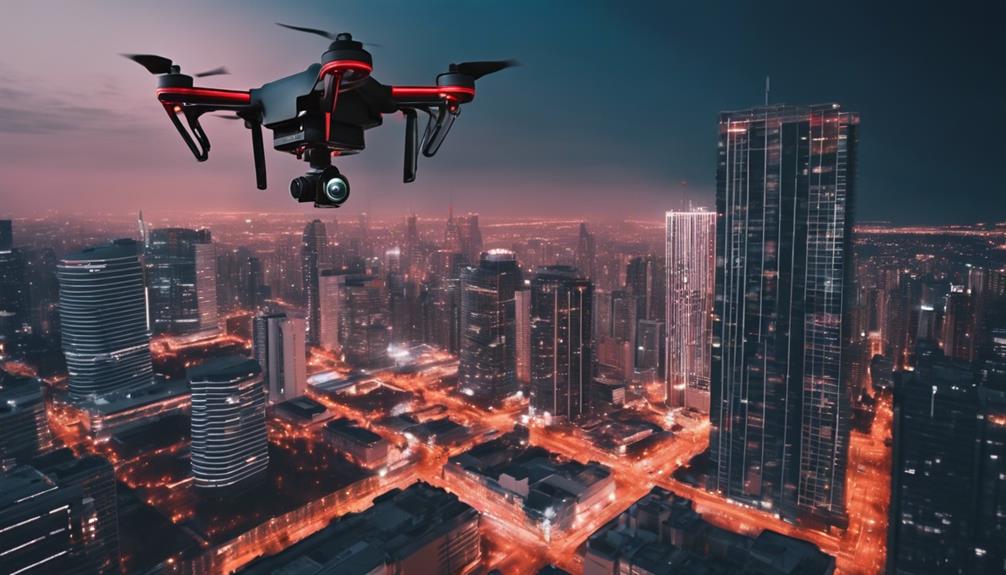
Think about a place where checking buildings is quick, exact, and doesn't break the bank. This is the place where drone technology takes us.
We're going to chat about how drones, with their super cool cameras and high-tech sensors, are changing the way we inspect buildings.
We'll also mention a few things that drones can't do yet.
Advantages of Drone Inspections
Drones are changing the way we check buildings. They're like flying cameras! They can take high-quality images and even make 3D models of buildings. This helps us understand what's going on with a building without having to climb up and look at it ourselves. This is faster, cheaper, and safer.
Drones can go places that are hard for us to reach, like high rooftops or awkward corners. They can do a better job than traditional methods. Plus, we don't have to risk getting hurt in dangerous areas.
Drone Inspection Limitations
Drones can do a lot of cool stuff, like helping with building inspections. But, they also have a few problems we need to think about.
Firstly, buying a drone can cost a lot of money upfront.
Secondly, bad weather, especially strong winds, can mess up the inspection results.
Drones also have limited battery life, which can make it hard for them to reach some areas.
Despite these issues, drones can still be really helpful in building inspections.
AI-Powered Inspection Tools
AI-powered tools are changing the way we check buildings. These smart tools use special computer programs to make inspections better and faster. They can find patterns, oddities, and potential problems that humans might miss, making the checks more precise and trustworthy.
Think about a robot that can find mistakes in pictures. That's what these AI-tools can do! They can pick out issues in images without you having to look super closely. They do this job quicker and better than humans can.
These smart tools make the inspection process smoother. They allow you to do more checks in less time, and do them better too. You're not just checking buildings anymore, you're leading the way with these high-tech tools.
In short, AI-tools for inspections aren't just about doing things faster or better. They help you to be a part of this thrilling field. AI is changing the way we examine buildings, and you're in the middle of it all.
Role of Thermal Imaging

Think about a gadget that allows you to spot hidden problems in buildings, such as water leaks or electrical issues, before they turn into big, expensive troubles. This is what thermal imaging does.
Let's look at how this cool technology is changing the way we check buildings, how it's getting better and better, and why it's so important in the world of building and maintenance today.
Thermal Imaging Applications
Thermal imaging is like having superpowers for building inspections! It uses special cameras to spot problems like missing insulation or sneaky water leaks, without even touching anything. These cameras work by finding different temperatures inside a building. This helps make buildings safer and easier to maintain.
Imagine a superhero who can find overheating parts in electrical systems, or spot faulty connections in an instant. That's what thermal imaging can do! It also helps save energy. How? Well, these cameras can see where heat is escaping from a building. It's like playing a game of hide and seek with heat loss!
Advancements in Thermal Technology
As we explore more about heat technology, we find out that it's changing the way we check buildings. Thanks to this tech, we can now find places where the insulation isn't good enough or where water is getting in, without having to physically check everything.
That's right, we don't have to guess anymore. These strong heat cameras take in heat signals and change them into pictures we can see. They show where it's hotter or colder, so we've a clearer picture of what's going on. Hidden issues? Now they're easy to spot! Measuring energy use? We're more precise now.
This tech isn't just cool, it's really helpful. It shows us what's happening in a building and helps us save money by finding where heat is escaping. It's like we've super vision for buildings!
Efficiency of Thermal Imaging
Thermal imaging is like a superpower. It's a tool that uses special rays, called infrared radiation, to show temperature differences in a building. This is something our eyes can't do! It's like having magic glasses that let you see hidden problems, such as gaps in insulation or areas of heat.
This tool doesn't harm or damage anything, and it's beneficial for checking buildings. It's especially useful because it can help you spot problems before they get bigger. Just like a superhero stopping a villain before they cause too much trouble!
Besides, thermal imaging can help save energy. It shows where heat is being lost or where air is leaking from the building. Once you know where these spots are, you can fix them and save on energy costs.
Just imagine, it's like having a map that shows you exactly where the problems are in your building. This can be very useful for people who want their homes or workplaces to be as comfortable as possible. So, think of thermal imaging as a helpful superhero tool for your building.
Software Solutions for Inspections

Inspection software solutions are like having a secret superpower. They help you work smarter, not harder. Imagine a computer program that keeps everything in order for you. It's like having a digital assistant that helps you manage tasks and keep track of inspections.
This type of software is a bit like a control panel where you can see everything in one place. It's like being the captain of a starship, controlling everything from one spot. You're not just controlling things, you're making sure everything is safe and sound at work.
What's really cool is that as more people get smartphones, these software solutions become cheaper and easier to use. It's like having a high-tech tool right in your pocket. But it's not just about having this tool, it's about how it helps you collect and analyze data. With fancy reporting features, you're not just gathering data, you're using it to make smart choices that can lead to success.
In a world where being quick is key, these software solutions for inspections can help you work faster and smarter. You're not just doing your job – you're leading, creating new things, and changing how inspections are done.
Embracing Remote Building Inspections
In our fast, tech-filled world, we can now use cool tools like drones and sensors to inspect buildings from afar. Think about it – no need to physically be there, all while getting detailed insights. It's like having a superpower!
When you use remote inspections, you're letting high-tech tools do all the hard work. Drones can reach places that are tough to get to, and sensors give you precise info. This helps you make decisions quicker, saves you time, and even cuts costs.
Doing building inspections from a distance solves some big problems. It helps when there aren't enough staff, keeps people safe, and improves the quality of the inspection. It also helps you stay on top of your work and meet modern needs. It's a smart way to solve problems that traditional methods often face.
Future Trends in Inspection Tools

Moving forward, you'll see things like AI and IoT becoming big players in the world of building inspections. They're changing the way we do things and making everything a whole lot smarter.
AI is like a super helper for building inspectors. It uses stuff like predictive analytics, which is all about predicting what might happen in the future based on what's happened in the past. It also uses machine learning, which is when a computer learns from its experiences, kind of like us humans. This all helps inspectors find potential problems quicker and make smarter decisions.
Then there's IoT, or Internet of Things. This is when everyday items, like sensors, are connected to the internet and can communicate with each other. For building inspections, this means we can keep an eye on things in real-time and catch any problems before they get too big. This can save us time, money, and a whole lot of headaches.
Technology is also making building inspections more fun. New platforms let you be part of the process and make you feel more involved in looking after your building.
Conclusion
Get ready for the future of checking buildings with these cool tools. Drones, AI, and heat pictures aren't just fun gadgets, they're changing how we do things.
Computer programs make the job easier, and looking at buildings remotely is super handy. As we move forward, these trends are going to keep making things interesting.
So, don't be left behind. Keep up-to-date, use these top-notch tools, and let's change how we inspect buildings together.…


